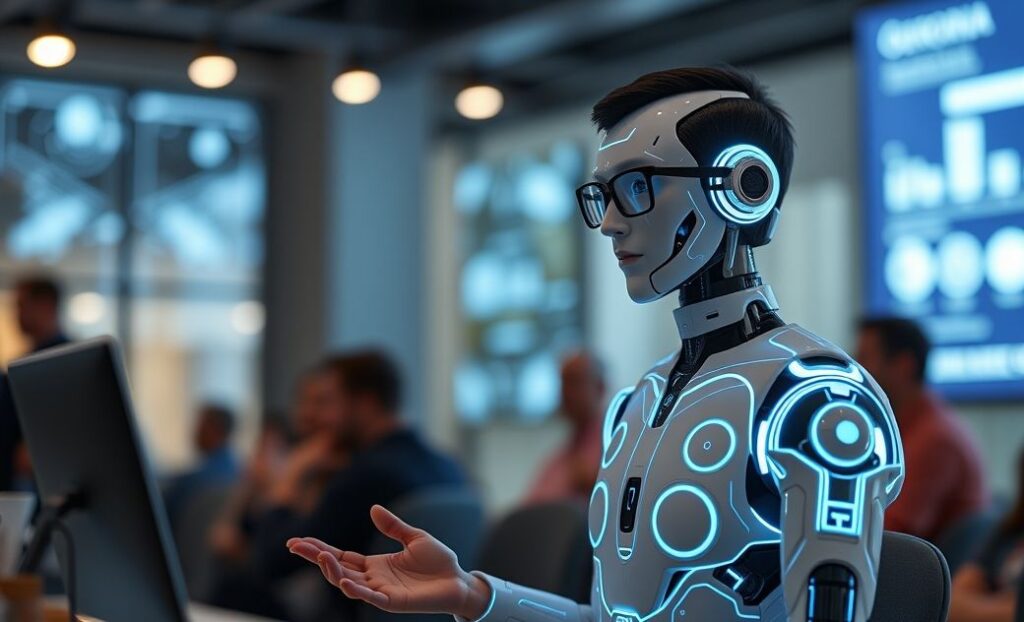In the rapidly evolving landscape of technology, AI-powered virtual assistants are emerging as frontrunners in transforming how businesses operate and individuals manage their daily tasks. As we stand on the brink of 2025, these digital companions have evolved significantly, powered by advanced artificial intelligence technologies that promise to reshape interactions and improve efficiencies. Here’s a closer look at their rise and what they mean for the future.
Understanding AI-Powered Virtual Assistants
AI-powered virtual assistants are sophisticated software agents that can perform tasks or services for an individual based on commands or questions. Enhanced by machine learning and natural language processing (NLP), these assistants interpret voice commands, conduct conversations, and interact with other digital services. Unlike their predecessors, which required precise commands, modern virtual assistants can understand and respond to complex queries, making them more user-friendly and effective.
The Core Technologies Behind Them
Machine learning and NLP are the backbone of modern virtual assistants. These technologies allow the assistants to learn from previous interactions, improving response accuracy over time. NLP enhances their ability to understand and process human language, making interactions more natural and conversational.
Integration with IoT
The integration of AI virtual assistants with the Internet of Things (IoT) devices means a seamless experience across various smart devices, from thermostats to home security systems. This integration allows users to control their environment hands-free, creating a more connected and efficient lifestyle.
The Impact of Virtual Assistants on Businesses
AI-powered virtual assistants are not just changing personal interactions—they are significantly affecting business operations across various sectors. Their ability to automate tasks, provide 24/7 customer support, and deliver personalized interactions makes them valuable assets in the business world.
Enhancing Customer Service
Businesses across industries deploy virtual assistants to enhance customer service quality. These AI systems can handle high volumes of inquiries efficiently, providing instant responses and troubleshooting common problems. This reduces wait times and increases customer satisfaction, setting a higher standard for customer service.
Streamlining Business Operations
Beyond customer service, virtual assistants are used for administrative tasks, including scheduling, data entry, and email management. By automating these repetitive tasks, businesses can allocate resources to more strategic areas, thereby increasing productivity and reducing costs.
Future Prospects for AI-Powered Assistants
As we move further into 2025, the capabilities of AI-powered virtual assistants continue to expand. Ongoing advancements in AI and machine learning promise even greater achievements in human-AI interactions, with potential developments that are expected to bring transformative changes.
Personalization and Proactivity
Future iterations of virtual assistants are expected to offer heightened personalization and even proactive assistance. Using data analytics, these assistants will anticipate user needs based on past behavior patterns, offering suggestions before users even articulate a request.
Expanding Into New Domains
Emerging areas such as healthcare, education, and finance will benefit from the deeper penetration of virtual assistants. In healthcare, for instance, AI assistants could support diagnosis and patient management, while in education, they may offer personalized learning experiences. The financial sector could see enhanced advisory systems and automated financial services.
In conclusion, AI-powered virtual assistants in 2025 are poised to fundamentally reshape our interaction with technology. Their continual evolution promises a future where these digital allies seamlessly integrate into various aspects of life and industry, heralding a new era of convenience, efficiency, and innovation. As they become more intelligent and adaptive, both consumers and businesses stand to benefit from the advantages they bring to the digital table.
